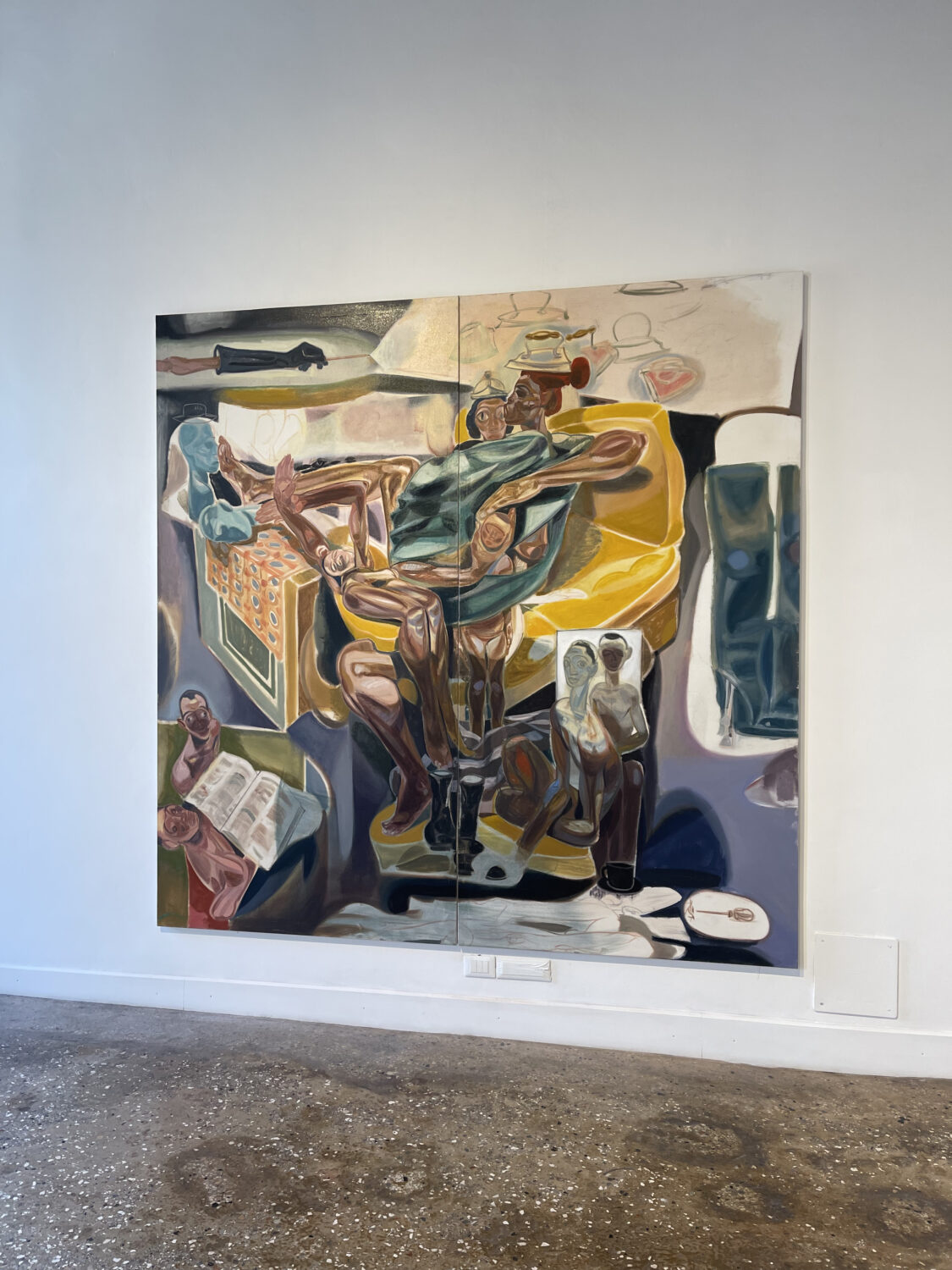Meet Tesfaye Urgessa, the Artist Behind the First-Ever Ethiopia Pavilion in Venice
By Keshav AnandHailing from Addis Ababa, artist Tesfaye Urgessa is representing Ethiopia at the 60th Venice Biennale — marking the country’s inaugural participation in the International Art Exhibition. Urgessa’s artistic journey began at the Ale School of Art and Design at Addis Ababa University under the guidance of modern master Tadesse Mesfin.
His painterly language connects Ethiopian iconography with an interest in traditional figurativism, exploring themes of race and identity politics within domestic spaces. In Venice — installed at Palazzo Bollani — Urgessa has worked closely with author and broadcaster Lemn Sissay, the curator of this momentous presentation.
To learn more about Urgessa’s practice and the Ethiopia Pavilion, Keshav Anand spoke with the artist.

Keshav Anand: What does it mean to you to be representing Ethiopia at the 60th Venice Biennale?
Tesfaye Urgessa: I’m thrilled and grateful for this chance, but I also feel the weight of responsibility. It’s a big deal because it’s the first time our country has a pavilion at the Venice Biennale. I hope it inspires other artists in Ethiopia to keep our artistic legacy alive and continue to participate in the years to come.
KA: Can you tell us more about the works you are presenting?
TU: The first Ethiopia Pavilion at the Venice Biennale, located in Palazzo Bollani, predominantly features large-format oil on canvas paintings. While the theme of “Foreigners Everywhere” isn’t new to me, having explored it in my previous artwork, I felt compelled to delve deeper into the issue. My aim was to create a group of figures engaged in unknown activities, intentionally leaving the situation ambiguous to the viewer.
This approach aims to immerse the viewer in an intimate space that feels familiar to the figures depicted but foreign to the viewer, as if they’ve entered a strange realm where they are being observed. I intend to evoke a sense of being scrutinised and potentially prejudged in the minds of viewers as they see my paintings.
By creating an atmosphere where the audience feels under scrutiny, I hope to prompt introspection and reflection on the nature of perception and judgment. My intention is to encourage viewers to confront their own biases and preconceptions as they engage with my artwork.

KA: Could you expand further on the figures depicted in your paintings — what influences their forms?
TU: Stripping away all the narratives I initially began with, I aim to eliminate any recognisable, associative activities found in real life. This approach provides the audience with an opportunity to focus on who the subjects are, rather than what they are doing. While actions may offer superficial answers, understanding who they are and how they are requires careful attention, leading to a deeper connection with the artwork.
Moreover, emotions profoundly affect our physical being, from subtle facial muscle movements to significant anatomical changes. Following the principle of reversibility, altering human anatomy even slightly can convey specific emotions at precise moments, akin to how actors manipulate their expressions. In painting, this effect can be intensified through the use of colour and overall composition, allowing me to convey emotion without the need for telling a coherent story.
Another crucial factor, perhaps the most significant one, is boredom. It serves as a necessary ingredient in my process. When you get bored doing things in a ‘’normal way’’ constantly you start to seek new approaches continuously. I strive to maintain a sense of curiosity and discovery. This pursuit leads to avoiding natural appearances and natural laws that are existing and governing in the three dimensional world.

KA: How would you describe your approach to utilising colour?
TU: I enjoy mixing colours a lot. I don’t use bright primary or secondary colours very often; instead, I prefer earth tones, olive greens and greys. Changes in my colour palette happen gradually over time. Sometimes, I notice certain colours slowly disappearing from my palette while new ones emerge. However, the lost colours may reappear again after some time or years.
I like to let the process in the studio guide me. I don’t plan out my paintings beforehand, either on paper or in my head. Each canvas is an opportunity to discover a new experience, whether it’s with colour, composition, the number of figures, or other elements.
KA: How has your experience been working with curator Lemn Sissay?
TU: He’s really easy to talk to and is genuinely interested in what I do, how I do it, and why. He approaches our conversations with pure curiosity, without judgment or comparisons to other artists. Instead, he listens as if everything is new to him, and his questions often lead me to discover new things about my work. He’s a talented writer, poet, and author, and the way he describes my work is sincere and straightforward.

I’ve always wanted to collaborate with him since I first knew about him. I work with images, and he works with words, making us a perfect match. Lemn has everything we need for the pavilion: he’s an incredible writer and broadcaster, and his vast network of diverse audiences around the world will be invaluable during the exhibition.
His pure passion for Ethiopia is exactly what we need for our first-ever pavilion. Plus, being based in England, he can organise events and tours more easily than someone living here in Ethiopia. As far as my heart and knowledge go, Lemn is the best companion for me to work on this project.
KA: Shifting topic for a moment, what are some of your favourite cultural spaces in Addis Ababa?
TU: Fendika Culture Center, Ethiopian National Theatre, and Alliance Ethio-Française.
KA: And what are you currently reading?
TU: This Much is True by Miriam Margolyes.
Feature image: Tesfaye Urgessa. Courtesy of Tesfaye Urgessa and Saatchi Yates. Photo: Kameron Cooper